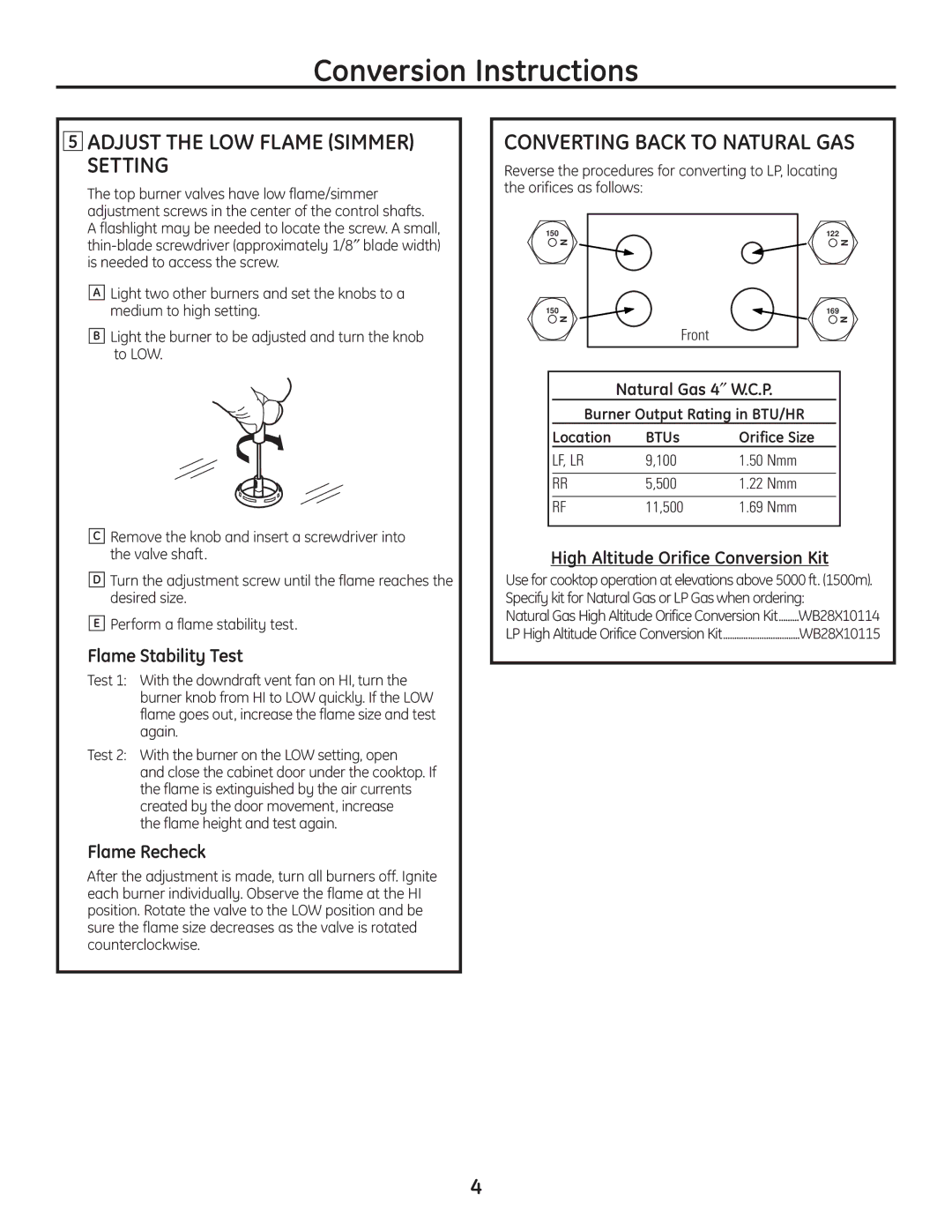
Conversion Instructions
5ADJUST THE LOW FLAME (SIMMER) SETTING
The top burner valves have low flame/simmer adjustment screws in the center of the control shafts. A flashlight may be needed to locate the screw. A small,
ALight two other burners and set the knobs to a medium to high setting.
BLight the burner to be adjusted and turn the knob to LOW.
CRemove the knob and insert a screwdriver into the valve shaft.
DTurn the adjustment screw until the flame reaches the desired size.
EPerform a flame stability test.
Flame Stability Test
Test 1: With the downdraft vent fan on HI, turn the burner knob from HI to LOW quickly. If the LOW flame goes out, increase the flame size and test again.
Test 2: With the burner on the LOW setting, open and close the cabinet door under the cooktop. If the flame is extinguished by the air currents created by the door movement, increase
the flame height and test again.
Flame Recheck
After the adjustment is made, turn all burners off. Ignite each burner individually. Observe the flame at the HI position. Rotate the valve to the LOW position and be sure the flame size decreases as the valve is rotated counterclockwise.
CONVERTING BACK TO NATURAL GAS
Reverse the procedures for converting to LP, locating the orifices as follows:
150 | 122 |
N | N |
150 | 169 |
N | N |
Front
Natural Gas 4″ W.C.P.
Burner Output Rating in BTU/HR
Location | BTUs | Orifice Size |
LF, LR | 9,100 | 1.50 Nmm |
|
|
|
RR | 5,500 | 1.22 Nmm |
|
|
|
RF | 11,500 | 1.69 Nmm |
High Altitude Orifice Conversion Kit
Use for cooktop operation at elevations above 5000 ft. (1500m). Specify kit for Natural Gas or LP Gas when ordering:
Natural Gas High Altitude Orifice Conversion Kit | .........WB28X10114 |
LP High Altitude Orifice Conversion Kit | WB28X10115 |
4
